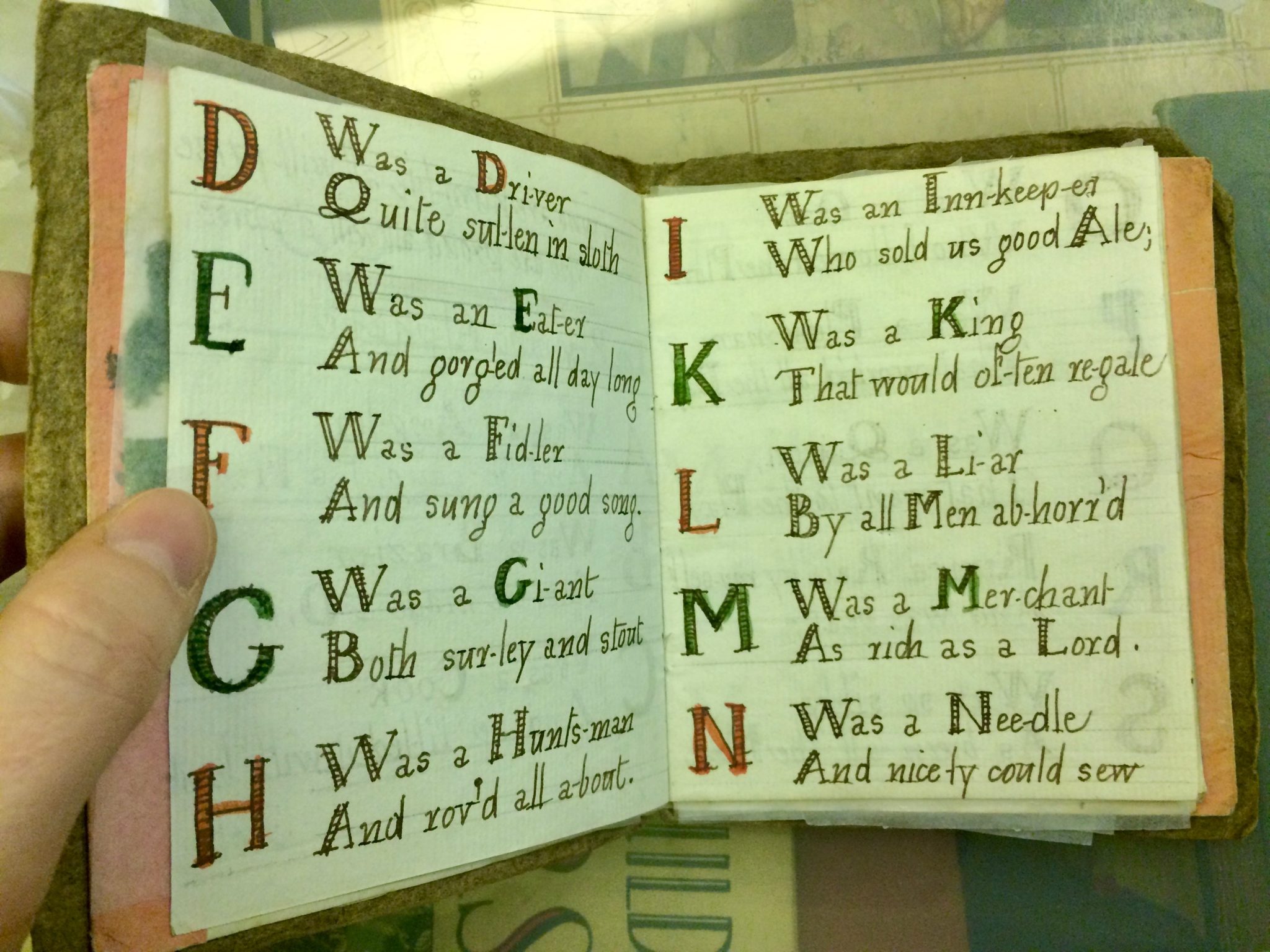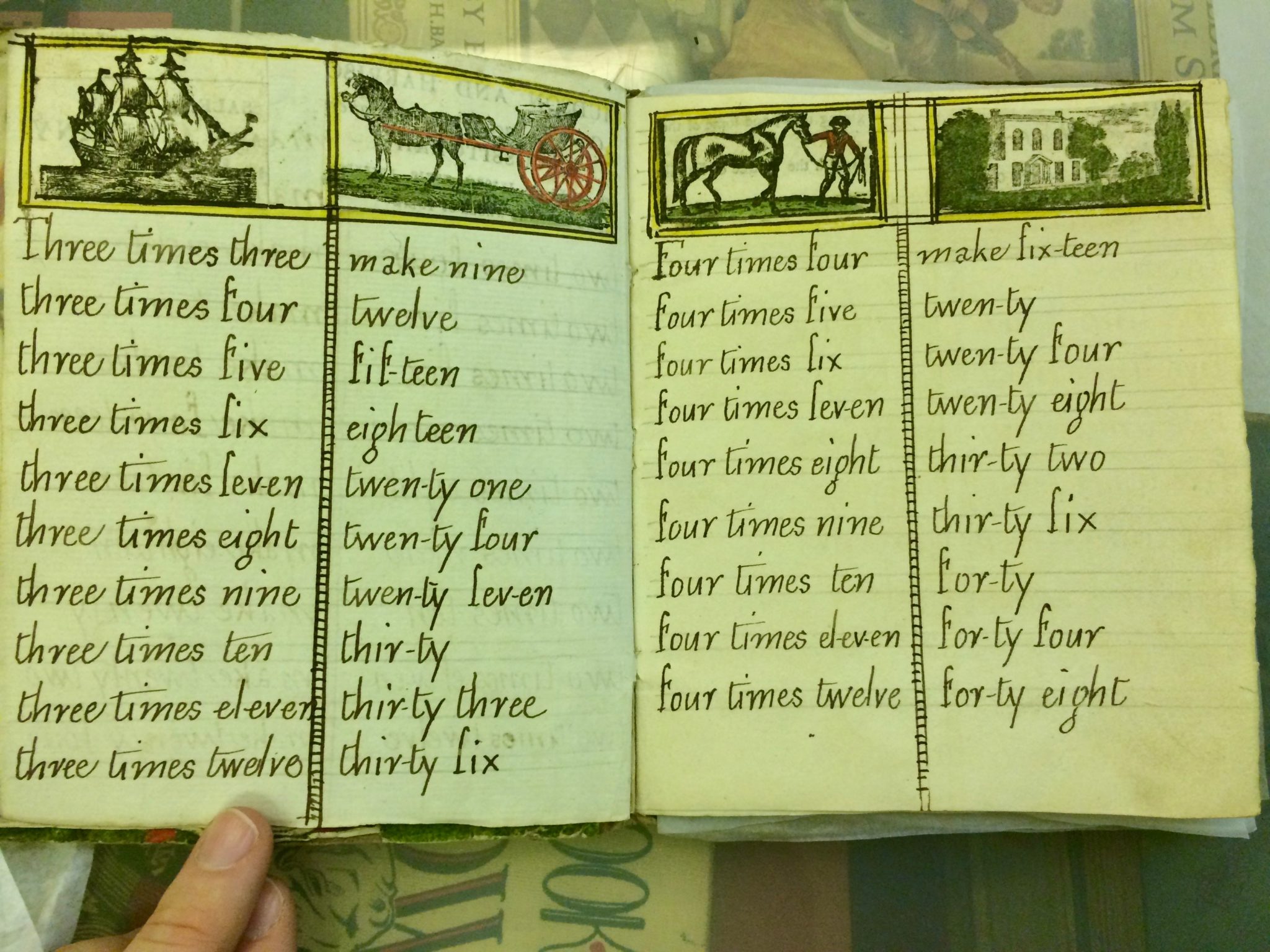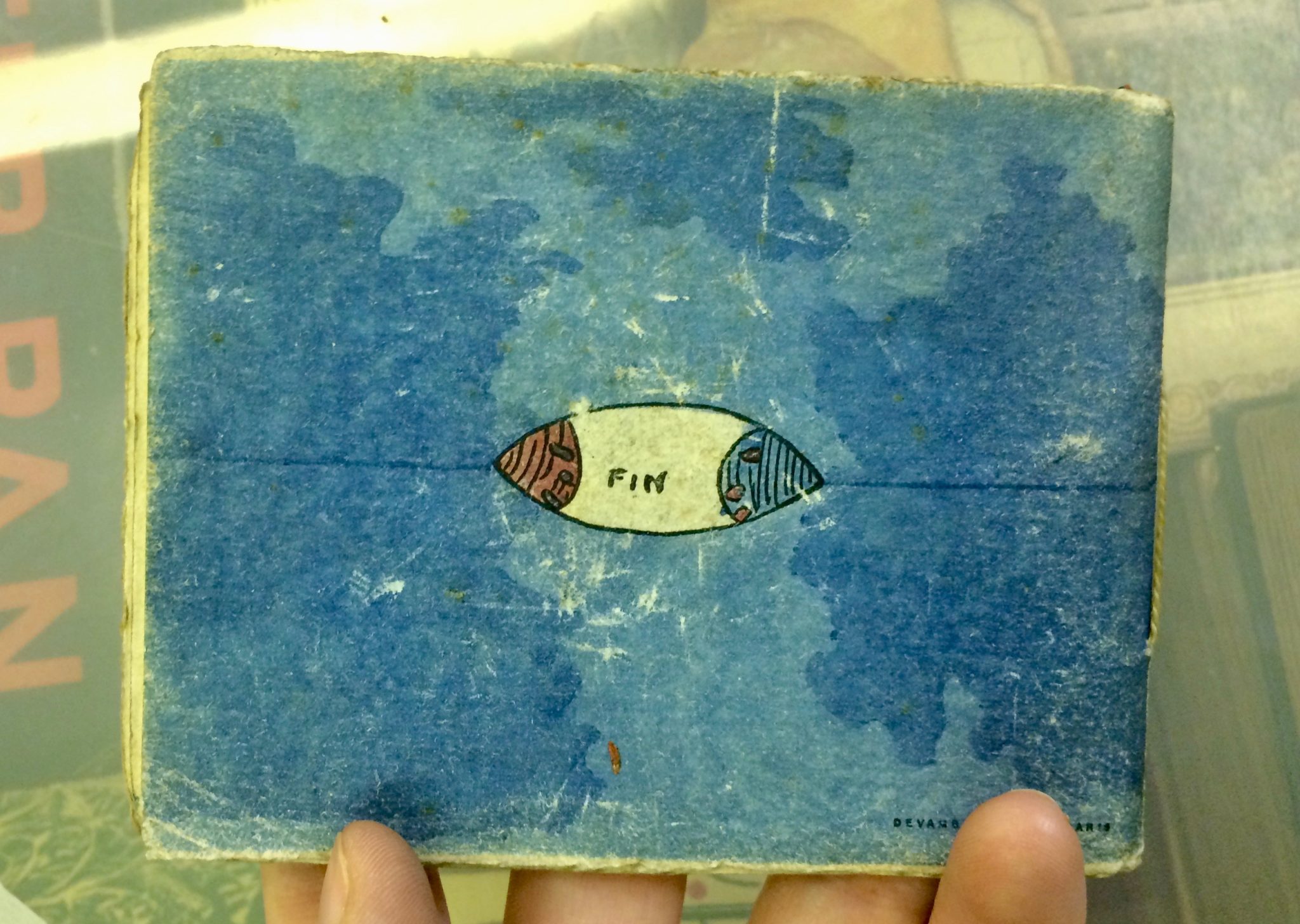SELCIE’s exhibition at the Museum of Childhood is opening in less than four months, therefore today I would like to spotlight one of the many types of books that will be included in the exhibition’s collection: the rare handmade books.
We have found only a handful of these touching and beautiful pieces of history, whose pages teach and tell stories meant for someone special. These three following books in particular will be available to view at our exhibition opening on June 1st, 2018.
One of the handmade books that I personally found in a box full of French and German novels is titled Nénette et Rintintin. This is a love story, written in French and illustrated in watercolours. It tells the tale of two dolls that were very famous during World War I named Nénette and Rintintin.

These dolls were widely produced in France around the year 1913, and were considered good luck charm dolls, as long as they were continually kept together. The dolls’ story tells how they met, both having been displaced because of the war, but how they both found love and happiness together, until the day when Rintintin was forced to leave for the front. He is injured, and this particularly lovely illustration shows how he is ‘sewn up’ and healed so that he can return to his dear Nénette.

We do not know much about this small, lovely book, but we can imagine that it was possibly made for someone who owned the dolls, or perhaps it was even given with the dolls themselves during a time of hardship and heartache.
——-
The ‘Pink Books’ as the SELCIE Team likes to refer to them, are handmade books that seem to have been made by a mother for her daughters, Sibella and little Mary. They are handwritten, and the script is broken up syllabically, perhaps in order to help the young girls learn to read. They were both made in 1811, and both have their pages separated by small pieces of wax paper, which has left the drawings and script in excellent condition.
One of the books is titled: ‘The Rhy-ming Al-ph-bet and the History of Mary Anne’

and the other book is titled: ‘Two Times Two Make Four, Lucy and Her Mamma, or the Pink Book’.

These books provide an interesting glimpse into an early 19th-century home, where is seems the mother of these two young girls was especially integral to their education: the lessons within the books teach everything from mathematics to morality to reading and rhyming.
While many of the books in the SELCIE collection are able to tell a story about their owners, their users, or the person that gifted them, these handmade books are entirely about their makers. They bring us closer to understanding the importance of both giving and receiving books, whether they provide narrative or education, we can find a great deal of love and devotion in each pen and brush stroke.

This post written by Morgan Boharski



How absolutely exquisite. I look forward to seeing them when I come back to Edinburgh.
We are very excited to know that the handmade books are inspiring your trip to Edinburgh, and we look forward to hearing from you about your visit!
Hand-made and handwriting has lasting warmth!
Thank you for your comment! We absolutely feel the same way – the inscriptions that we find within the books, and particularly these lovely handmade books, touch us very deeply and really show us the history of an object.